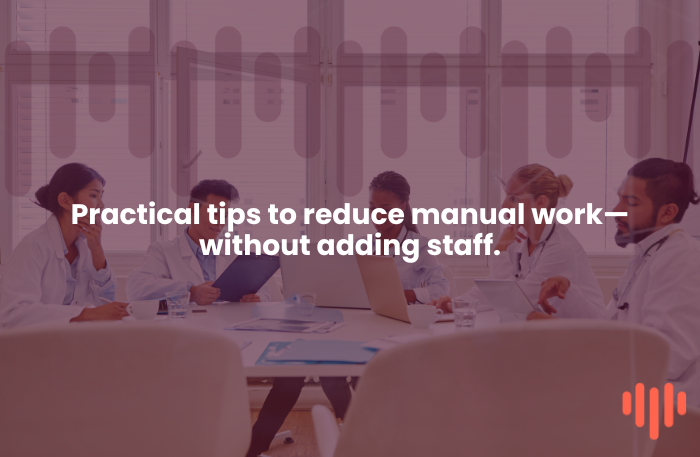Remote cardiac monitoring is now a standard part of care for patients with implantable devices—but that doesn’t mean it’s simple. Clinics often find themselves managing multiple platforms, juggling patient outreach, and trying to keep up with billing requirements—all while short on time and staff.
So how can clinics simplify their monitoring workflows without increasing overhead? Here are five proven strategies to help cardiology teams stay efficient and effective.

1. Centralize Your Monitoring Process
Many clinics use different systems for each device manufacturer, which can result in duplicated tasks, missed reports, or fragmented communication. Centralizing your monitoring workflows—whether through a platform or a consistent process—can help your team:
- See all patient reports in one place
- Standardize review and documentation procedures
- Reduce time spent logging in and out of multiple systems
The fewer platforms your team has to manage, the more time they can spend on patient care.
2. Automate Patient Outreach and Reminders—with AI Support
Missed transmissions are a top reason clinics lose revenue from remote monitoring. In many cases, these missed transmissions stem from patients who are disconnected or unaware they’re due for review.
Automation can make a significant impact here. Clinics are now using tools—including AI agents—to streamline patient engagement tasks such as:
- Detecting disconnected monitors
- Sending timely reminders via text or email
- Making outbound phone calls to follow up with patients
- Escalating no-show alerts to staff
AI agents can now place calls to patients on your behalf—confirming device setup, walking them through reconnection steps, or reminding them of upcoming transmissions. This reduces the burden on front-desk and nursing staff, while improving compliance and connection rates.
Even small-scale automation can improve patient outcomes and free up your clinical team to focus on higher-level care.
3. Standardize Interpretation Templates
Providers often waste valuable time writing or editing reports manually. Creating standard interpretation templates for common findings (e.g., normal, AFib, VT episodes) makes it easier for providers to:
- Review and sign reports faster
- Ensure consistent documentation
- Maintain compliance for billing
Templates should still allow room for customization, but giving your team a head start makes interpretation faster and more scalable.
4. Build Visibility Into Your Billing Workflow
Revenue from RPM is only as strong as the documentation behind it. Unfortunately, many practices operate without a clear view of what’s been billed, what’s pending, or what’s missing entirely.
Creating a billing tracker—whether in a spreadsheet or integrated system—can help you:
- Ensure every billable event is documented and submitted
- Avoid missed CPT code opportunities (93295, 93296, 93297, 93298)
- Identify gaps in report review or transmission completion
Small improvements here can lead to major gains in reimbursement.
5. Define Clear Roles Within the Clinic
One of the most common workflow breakdowns happens when it’s unclear who owns what. A device disconnects—does the front desk follow up? The nurse? The MA?
Take time to map your remote monitoring workflow and assign clear roles for:
- Patient enrollment
- Transmission monitoring
- Report interpretation
- Billing documentation
When everyone knows their role, nothing falls through the cracks.
Conclusion
Remote cardiac monitoring doesn’t have to be chaotic. With the right workflows, automation, and visibility, cardiology practices can deliver high-quality care while avoiding burnout and bottlenecks.
Want to see what this looks like in a real clinic setting? Start by mapping your current workflow—and look for areas where simple adjustments or automation could save hours each week.